The ASRock X99 Extreme11 Review: Eighteen SATA Ports with Haswell-E
by Ian Cutress on March 11, 2015 8:00 AM EST- Posted in
- Motherboards
- Storage
- ASRock
- X99
- LGA2011-3
One of the upsides of using a consumer grade motherboard for a prosumer system is the capability of both the BIOS and the features of the software compared to the normal workstation equipment. Normal workstations still use a dull black/white on blue BIOS implementation with no interactivity and mindless lists of features. With motherboards that come from the commercial lines of the major motherboard manufacturers, they bundle in both functionality and user experience, recognising that while the main user might not be interested, the local admin might need to go in sometime.
ASRock's X99 BIOS uses enhanced visuals, as well as a nicely laid out options list. It certainly beats the old style for sure, with the help system giving information when required. The goal here is to get motherboard manufacturers to increase the interactivity of such an interface, making it akin to software, but that remains difficult. ASRock uses icons and images, but we still have a fixed width font as well as merely selecting options. My hope is that this evolves - we live in the future after all.
Much of the detail of the ASRock X99 BIOS is similar to that of our previous ASRock X99 Motherboards. As a result we have copied the description and included it here for clarity, updated on note for the Extreme11 specific options.
ASRock X99 Extreme11 BIOS
The ASRock BIOS shifted slightly between Z87 and Z97, and it is the Z97 implementation we get on X99. This means the starry background is gone, replaced with a dark and blue-crystalline image. The icons are also reduced to mere text with a small image, and unlike the ASUS BIOS the menu sections are of equal size, which I prefer. There is also an adjustment to the OC Tweaker layout, which we will come to.
There is no ‘Easy Mode’ for the ASRock BIOS, with entry direct into this first Main screen. The right hand side of the BIOS is for description of the option selected, and the main segment shows information such as the BIOS version, CPU installed, CPU speed and memory installed. As mentioned in previous reviews, having some set of information relating to CPU voltages, temperatures and fan speeds might be useful here. If ASRock was to do an Easy Mode, it would make sense to have a one-button overclock option as well.
OC Tweaker takes heed of one of my previous complains about the ASRock overclock options. Previously there used to be a long list of options that continuously grew, depending on what options were left open to the user. For X99, ASRock has condensed these options into separate submenus similar in design to those we see on a GIGABYTE motherboard. Note that ASUS and MSI BIOSes currently go half-way between these extremes, offering some basic options with the more advanced ones in separate menus.
ASRock cuts straight to the chase – the first two options deal with overclocking. We have touched on features like Multi Core Enhancement many times previously, but it is interesting to have it so high up on the list of options. The Optimized CPU OC Setting gives some easy selections for overclocks based on ASRock’s internal testing:
In line with our overclock testing, 4.0 GHz and 4.2 GHz should be achievable by all CPUs, with 4.4 GHz by most and 4.5 GHz by around half, given sufficient cooling methods.
The OC Tweaker menu is split into four sections. CPU Configuration gives options for CPU Ratio, multiplier, frequency, turbo boost and power limits:
DRAM Configuration allows for XMP application, DRAM strap adjustment, DRAM voltage and sub-timing adjustment, all the way through primary timings, secondary timings, tertiaries and others.
ASRock still uses the DRAM Tweaker function to fine tune the JEDEC and XMP responses to each memory kit. The ASRock BIOS also offers a DRAM Frequency overclocking preset list which will adjust the CPU strap and BCLK frequency needed to achieve various speeds.
The FIVR Configuration menu from the OC Tweaker page deals primarily with the CPU and CPU Cache/uncore voltages.
The Voltage Configuration menu has the other voltages on the system, including VCIN to the FIVR and load line calibration. The Load Line Calibration option also comes with a handy graph showing what each setting means:
Unfortunately this arrangement of voltages is mildly confusing. Typically an overclocker will adjust the CPU voltage and the Load Line Calibration settings enough to get the right combination, and ASRock has placed these options in two different menus. If the CPU VCore option could be duplicated in the Voltage Configuration menu, this would be preferable.
The Advanced tab deals with other elements of the system configuration, such as the chipset, storage and super IO calibrations. This includes fixing power modes, PCIe linking speeds, disabling or enabling onboard controllers and adjusting RAID configurations.
An adjustment to the X99 Extreme11 BIOS is that the Active Page on Entry setting has been moved here.
By default the ‘Above 4G Decoding’ inside the Chipset Configuration menu is disabled, for users that want PCIe coprocessors that require this feature.
The Tools menu is typically where ASRock tries out its more unusual ideas, although we do not get anything new for X99 that we have not seen on Z97 already. The System Browser shows the different elements of the motherboard and what is detected:
The Online Management Guard (OMG) allows the user to enable or disable the network ports at various times of the day, as determined by the system time:
(It is amusing that this feature is aimed more at controlling when a child is allowed online, but X99 is not exactly a system configuration used as secondary machines.)
The Dehumidifier function now gets its own sub menu, allowing fans to spin for a fixed time after the machine is in S5:
The H/W Monitor tab is where the temperatures, fan speeds and voltage monitoring tools are all kept, and we have seen an effort by the other manufacturers to improve the fan control situation. ASRock now joins them with the FAN-Tastic tuning option, moving into a more interactive type of scenario. This extends the multi-point gradient options into something more clickable, similar to the ASUS implementation. For example, a user can put a fan into one of five modes or customize the profile:
Rather than using the interface, users can do it the older way:
There is also an option to select which temperature sensor is being read from to make these adjustments.
The rest of the BIOS deals with security, boot order and fast boot options. In the Save and Exit menu we do get options for Boot Override:


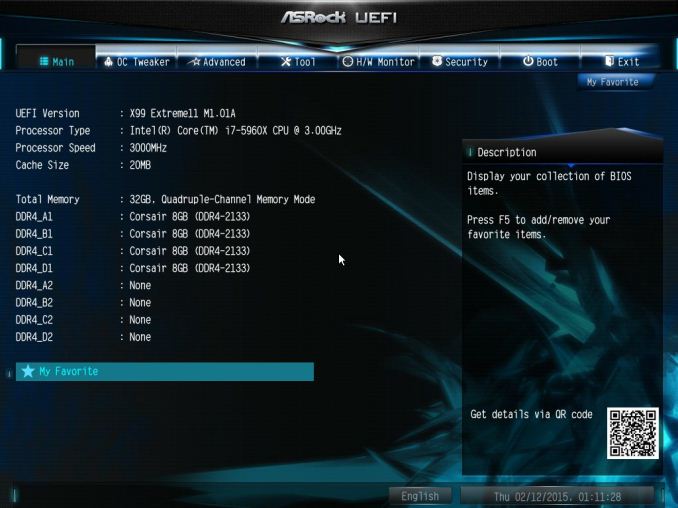
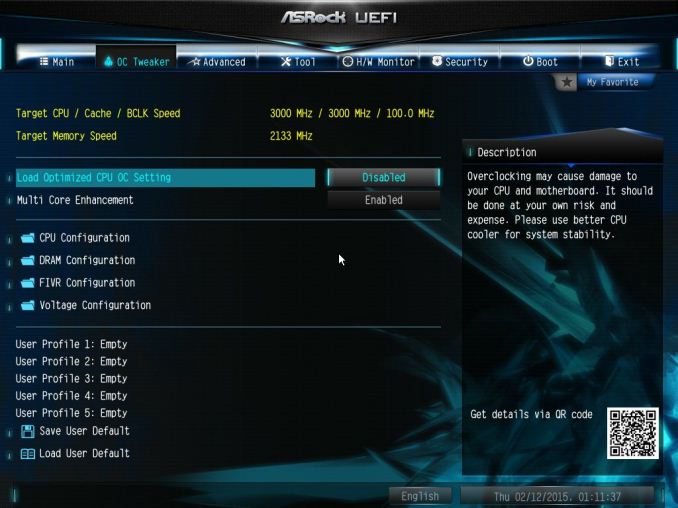
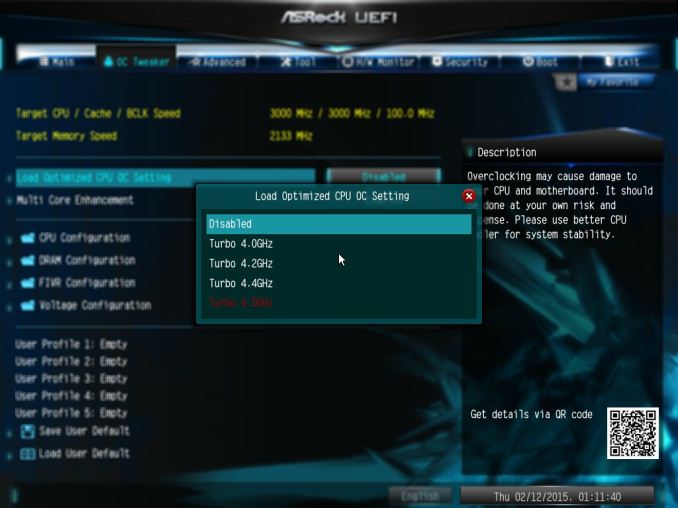
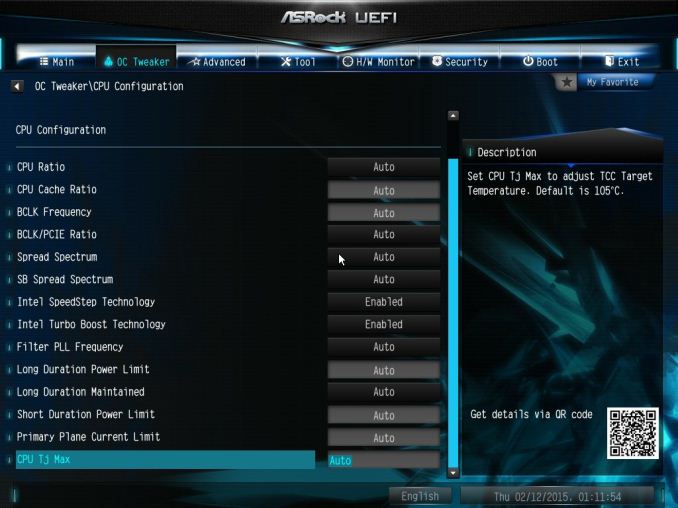
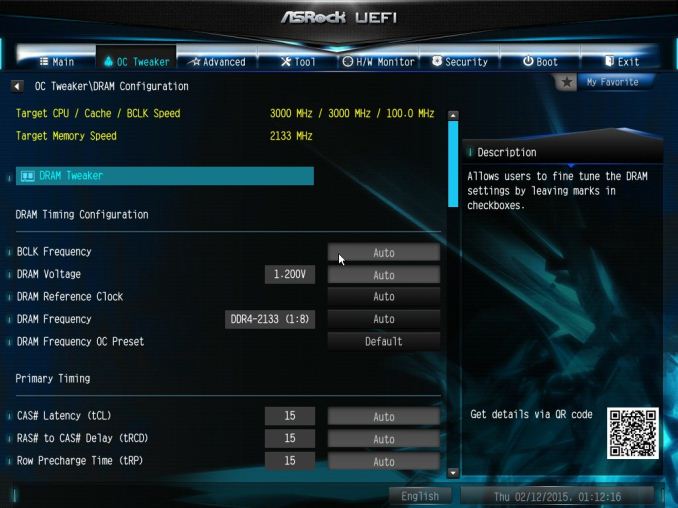
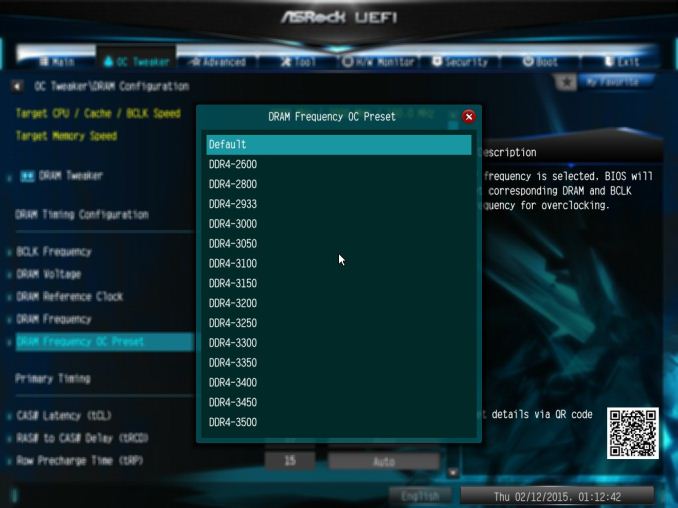
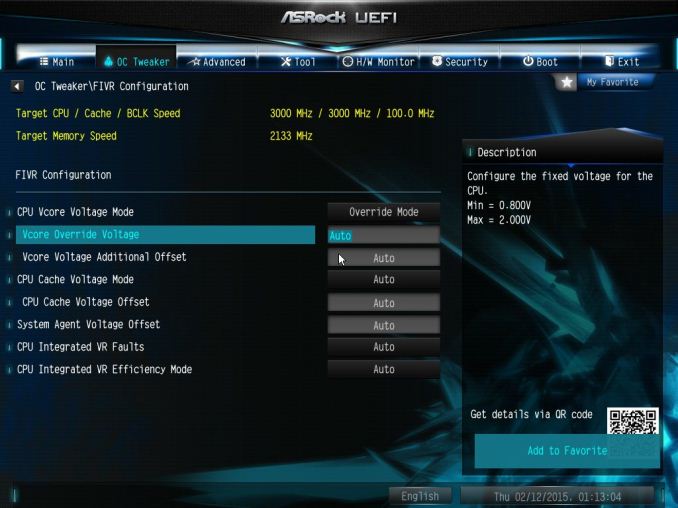

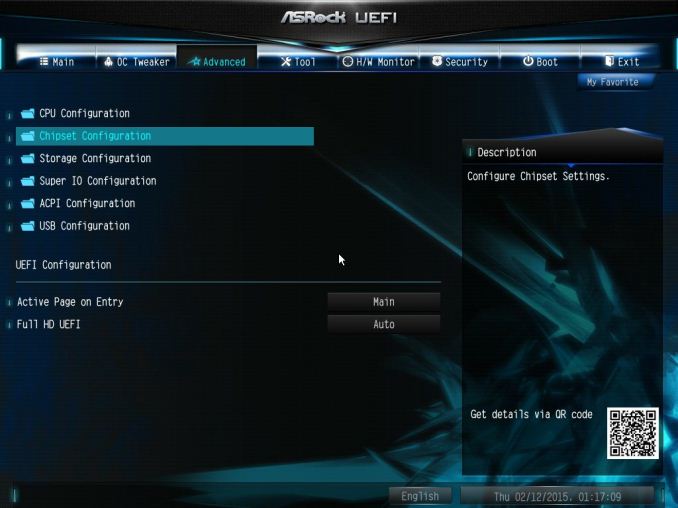
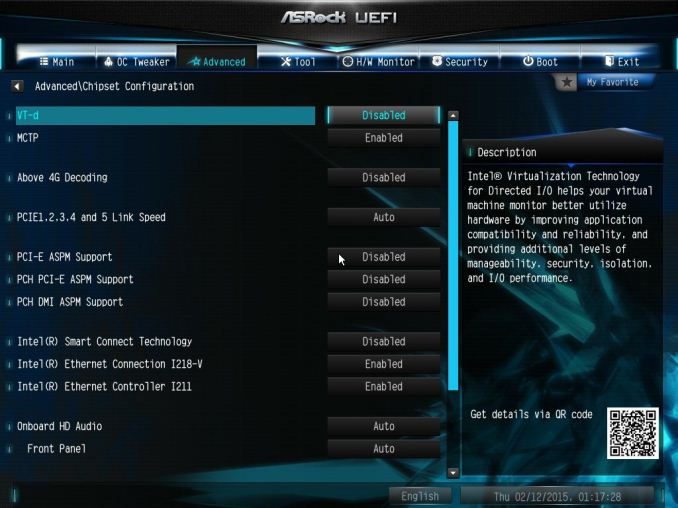
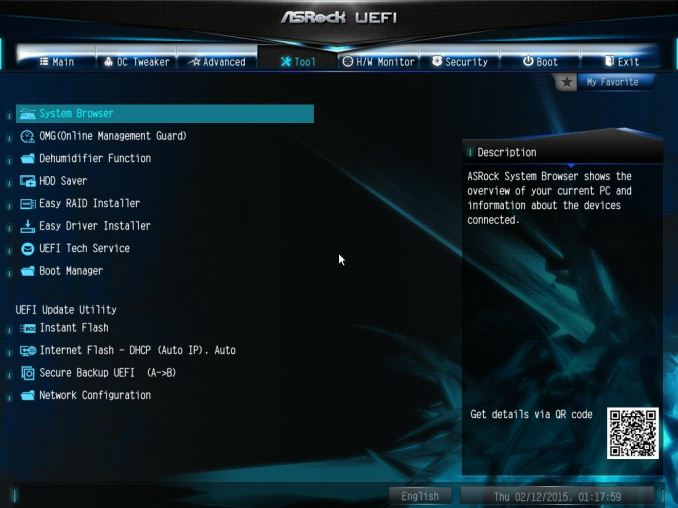
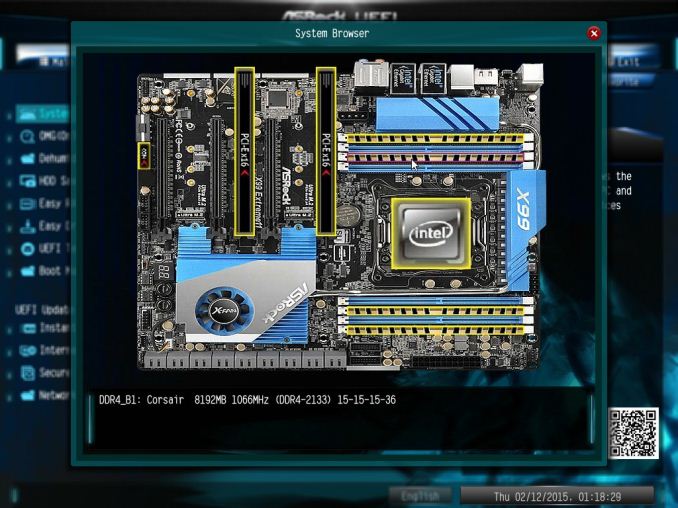
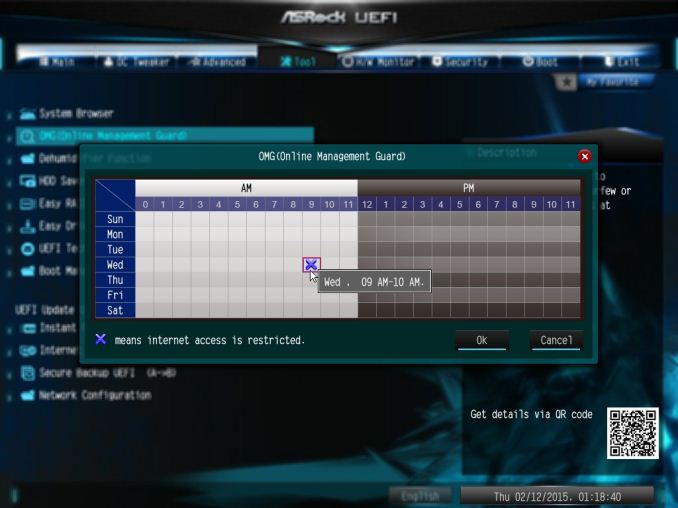

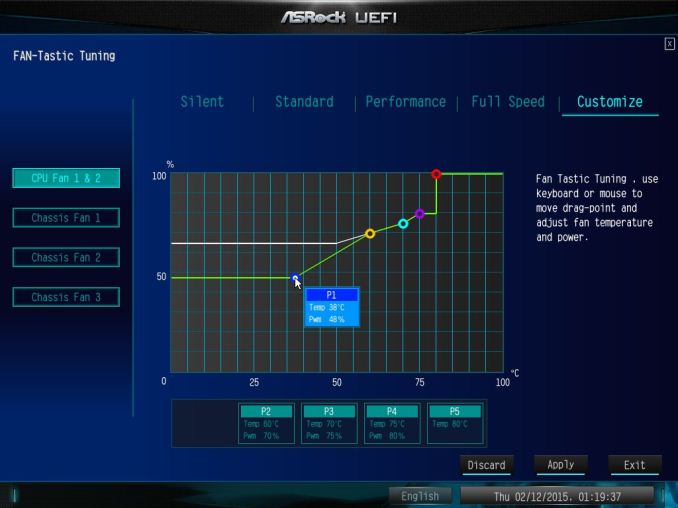

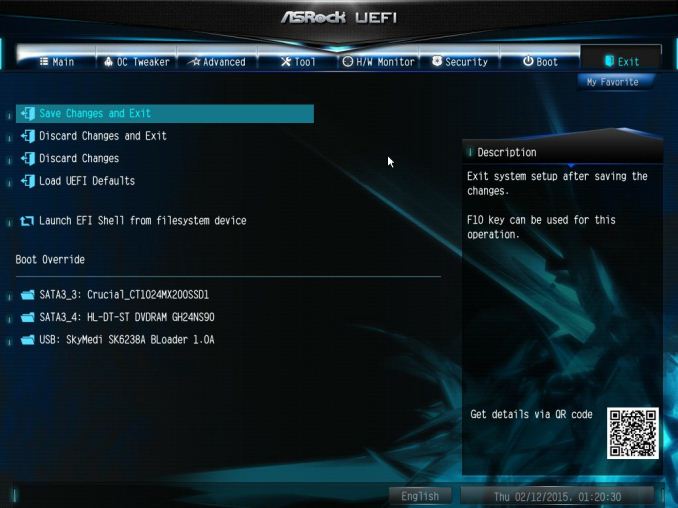














58 Comments
View All Comments
lordken - Friday, April 3, 2015 - link
Rather you should apology for being lazy. abufrejoval did run some math for you, so its pretty clear that all 18x ports wont deliver full bandwidth. If you need to run 18x SSD at full speed then you probably need server board or something.If you want to troll go elsewhere.
petar_b - Friday, January 29, 2016 - link
abufrejoval is not theoretical - 1 SSD on PCH can do 400Mb/s, but 4 SSDs simultaneously can give less 100MB/s transfer each. Now move that on SAS controller and each SSD gives 400MB/s.Once you start using SSDs on SAS - you will never go back to PCH.
I posted article a year ago on the web showing differences I have measured with crystal benchmark - values are shocking... measurements were based on ASRock X79 Extreme11, same SAS controller just CPU and RAM bit slower.
wyewye - Friday, March 13, 2015 - link
Good point duploxxx.I haven't seen a professionally done review on this site for quite a while.
petar_b - Friday, January 29, 2016 - link
Motherboard has nothing to do with gaming, go for ROG if you wish gaming. Business use, rendering, 3D where storage needs to be fast and has to be SAS.We are using older generation of the board X79 with PLX and SAS controller. There are no words nor space here to explain you what performance increase we we hook up 8 SSDs (960G) on SAS instead of Intel...
It's perfect for virtualization on or cloud realization - example: 128GB RAM + 6T SSDs can accomodate more than 20 vmware images, each with 4GB ram, running perfectly on Xeon.
@dicobalt - keeping porn ? it's so sad ppl think no further than gaming and watching tv. go buy book and learn something... mathlab, 3d studio and earn money. actually get a tv and watch porn there.
3DoubleD - Wednesday, March 11, 2015 - link
Thanks for the review! This board is incredible. I run a storage server with a software raid (Unraid) and this board alone would handle all of my SATA port needs without the need for any PCIe SATA cards. The only issue is the price though. For $600 I could easily buy a $150 Z97 motherboard with 8 SATA ports and two PCIe 8x slots, buy two $150 PCIe 2.0 8x cards (each with 8 SATAIII ports), and I'd still have money left over (probably put it towards a better case!). Also, that's not counting the significant difference in CPU and DDR4 costs.Clearly this motherboard is meant for a use case beyond a simple storage server (so many PCIe 8x slots!), so I can't say they missed their intended mark. However, I really wish they could attempt something like this on the Z97 platform, more than 10 SATA ports but with no more than two (or three) PCIe 8x slots (even if some of them are 4x). Aim for a price below $250.
I can't pretend it would be a big seller, but I know I'd buy one!
WithoutWeakness - Thursday, March 12, 2015 - link
ASRock has the Z87 Extreme11 with 22 SATA III ports (6 from chipset, 16 from LSI controller) along with 4-way SLI support (x8,x8,x8,x8) and a pair of Thunderbolt 2 ports. I'm not sure how feasible it is to plan on using all of those with only 16 PCIe 3.0 lanes from the socket 1150 CPU but it sounds like everything you're asking for. Unfortunately it came in over $500, double your asking price.I think you'll be hard pressed to get what you're looking for at that $250 mark, especially on a Z97 board. Socket 1150 CPUs only have 16 lanes and every manufacturer who is willing to put an 8+ port RAID controller on board will also want a PLX PCIe bridge chip to avoid choking other PCIe devices (GPU's, M.2 drives, etc). The RAID chip alone would bring a $100 motherboard into the $200+ range and adding the PLX chip would likely bring it to $250+. At that point every manufacturer is going to look at a board with 14+ SATA ports, a PLX chip, and a Z97 chipset and say "lets sell it to gamers" and slap on some monster VRM setup, additional USB 3.0 ports, 4 PCIe 16x lanes, bake in some margin, and sell it for $400+.
3DoubleD - Friday, March 13, 2015 - link
Makes sense. Thanks for the suggestion, I'll look into it. Not sure why I've never come across this board, doesn't seem like it is sold at any of the common outlets I shop at (Newegg.ca, ect.). Still, going the add-in SATA cards seems to be the more economical way.wintermute000 - Sunday, March 15, 2015 - link
You wouldn't have ECC with Z97.Maybe unraid is better than ZFS/BTRFS but I still wouldn't roll with that much storage on a software solution (vs HW RAID) without ECC.
Vorl - Wednesday, March 11, 2015 - link
This is such a strange board. with 18 SATA connections, the first thing everyone will think is "storage server". if all 18 ports were handled with the same high end RAID controller then the $600 price tag would make sense. As it is, this system is just a confused jumble of parts slapped together.Who needs 4 PCIE x16 slots on a storage server? That is an expense for no reason.
Who needs 18 SATA connections that are all mixed around on different controllers that can't all be hardware raided together? Sure, you can run software raid, but for $600 you can buy a nice raid card, and sas to sata breakout cards and cables, and still be ahead due to full hardware performance with cache.
Also, for a server, why would they not have the IGP port? I may be missing something, but I thought they CPU has integrated graphics.
Just not an awesome setup from what I can tell.
So.. why bother having all those sata ports if they aren't all tied to RAID?
They add an LSI controller, and that isn't even what handles RAID on the system.
1nf1d3l - Wednesday, March 11, 2015 - link
LGA2011 processors do not have integrated graphics.